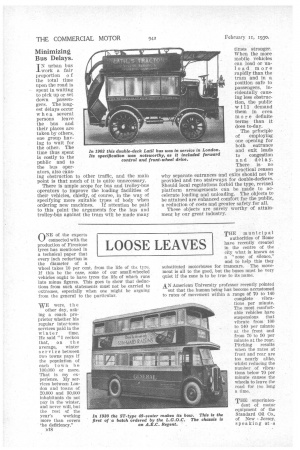Travel by Road— BY THE EDITOR THE passenger-vehicle industry—and in this
Page 95

Page 96

If you've noticed an error in this article please click here to report it so we can fix it.
term we include both the operators and builders of road motors—whilst not as yet so large as that concerned with the carriage of goods by road, is of ever-increasing importance and is intensely progressive in respect of the vehicles employed and the methods of operation. It is an industry which has at its back that huge section of the public which makes use of the facilities provided, and few indeed can claim with truth that the bus, the trolleybus, the coach, the cab or the private-hire car is not proving of considerable benefit to them. Even those who prefer to travel long distances by train usually employ road vehicles for short distances, and there is a continually increasing demand for services covering greater areas.
Last year, 5,000 million passengers were carried by bus alone in this country—an average of considerably over 100 journeys per head of the whole population. In four years the number of buses has increased by 33i per cent., whilst the coach fleet has been practically doubled. New registrations of companies in 1920 numbered 125 with a total capital of over four millions sterling, and this apart from fresh Individual operators, unincorporated firms and new municipal-transport undertakings. This important industry is one which IS certain to grow until its feelers cover the length and breadth of the land, and until the inhabitants of the most obscure village are brought within easy reach of more important centres of population. Unwise attempts to hamper its progress by undue restrictions as to speed, etc., must eventually succumb to the national demand for fast transit.
The fears regarding the evil effects which might result from railway participation in road transport have proved almost groundless—in fact, as prominent shareholders in a great many of the operating Companies, it is now being realized that it is to the advantage of the railways that the road-travel side should receive a considerable measure of encouragement.
It is in connection with the long-distance services that the railways are likely to discourage competition, but even in this sphere the prospects are quite bright.
Thousands of people to-day travel wherever possible by coach or bus, and with the rapid improvements being effected in chassis and bodies, this public preference will naturally grow.
Minimizing Bus Delays.
IN urban bus work a fair proportion o f the total time upon the road is spent in waiting to pick up or set down passengers. The longest delays occur when several persons leave the bus and their places are taken by others, one group having to wait for the other. The time thus spent is costly to the public and to the bus operators, also causing obstruction to other traffic, and the main point is that much of it is quite unnecessary.
There is ample scope for bus and trolley-bus operators to improve the loading facilities of their vehicles, chiefly, of course, in the way of specifying more suitable types of body when ordering new machines. If attention be paid to this point the arguments for the bus and trolley-bus against the tram will be made many times stronger. When the more mobile vehicles can load or unload more rapidly than the tram and in a position safe to passengers, incidentally causing less obstruction, the public will demand them in even more definite terms than it does to-day.
The principle of employing one opening for both entrance and exit leads to congestion and delay. There is no practical reason why separate entrances and exits should not be provided and two stairways for double-deckers. Should local regulations forbid the type, revised platform arrangements can be made to accelerate loading and unloading. The objects to be attained are enhanced comfort for the public, a reduction of costs and greater safety for all.
These objects are surely worthy of attainment by our great industry.




























































































































































































































